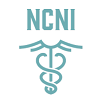You might have heard of wry neck, which is used to describe the slight tilting or twisting of heads, most commonly in babies. Parents are quick to notice if their infants don’t have a normal neck and head—it tilts a little to the side. This condition is called torticollis and is a movement disorder. If left unchecked, it can mushroom into far greater trouble in the long-term, which is why many parents wisely want to get their infants checked by a movement disorder specialist.
But what causes this extreme condition?
The Case: Childbirth
So far, the known cause of torticollis is difficult childbirth. Congenital—which means something that is present at birth—torticollis shortens the infant’s neck, which in turn makes it twist. In the case of being delivered breech, the chances of torticollis are dramatically increased.
Each one of us has a neck muscle extending from jawbone to collarbone and breastbone. We pull it and stretch it all the time—but when going through a difficult childbirth, this muscle may get torn, bruised, and may even start bleeding. Inside the injured muscle, a scar tissue (or fibrosis) begins to form, and this causes shortening and tightening of the muscle. The head, as a result, becomes tilted at one side. At times you can feel a mass on the side of your infant’s neck—this is the fibrosis.
Symptoms

Although the disorder is one that’s associated with childbirth, it’s not always possible to detect it at childbirth. While in most cases, the symptoms—tilted neck—are visible when the child is born, some cases are different. The symptoms don’t become apparent until weeks have passed. In either case, the symptoms are the same, them being:
-Head that’s tilted to one side
-A chin that’s turned upward, to the opposite side that it should be facing
-A mass or lump that can be felt at the side of the neck. This mass is small and firm, about a centimeter or two in length.
Although these symptoms are a pretty good indicator of torticollis, it’s still best to visit a doctor or a specialist to ensure that the symptoms have been diagnosed correctly. The symptoms can coincide with the symptoms of other medical conditions such as neck masses, which is why it is always wise to get it checked out by a specialist.
Looking for a Specialist in L.A.?
If you’ve observed something similar in your infant and want an L.A. based specialist to take a closer look at the symptoms, Dr. Farzin Pedouim is here to serve. Dr. Farzin has a specialty from the University of California Irvine and a sub-specialty from Loma Linda University. A neurology specialist with over 10 years of experience in treating movement disorders such as torticollis, Dr. Farzin can be reached at (949) 239-4410, or you can book an appointment with him online.





